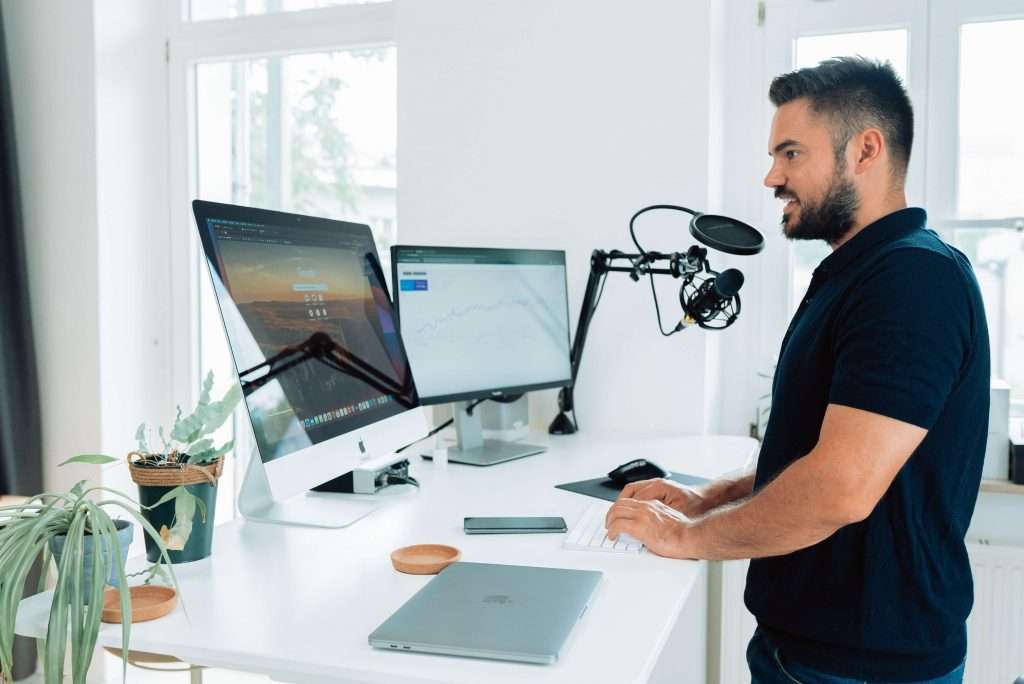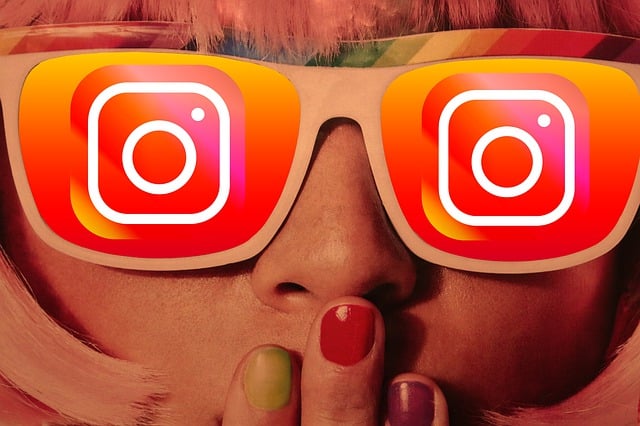It can be challenging to predict an influencer’s growth potential as it depends on several factors and variables.
Taking into consideration several Social Media platforms like Facebook, Instagram, and TikTok, it is important to keep in mind four key considerations that can aid in assessing the potential for an influencer’s growth:
1. Content Quality: Evaluate the quality of the influencer’s content. Look for consistency, creativity, and the ability to engage their audience. High-quality content has a better chance of attracting and retaining followers.
2. Audience Engagement: Examine the level of engagement the influencer generates with their audience. This includes likes, comments, shares, and overall interaction. Influencers who have an active and engaged audience are more likely to experience growth.
3. Follower Growth Rate: Track the influencer’s follower growth over time. Consistent and steady growth is a positive indicator. Sudden spikes in follower count could be a result of temporary trends or external factors, so it’s important to assess the sustainability of the growth.
4. Niche Relevance: Consider the influencer’s niche and whether it aligns with current trends or interests. An influencer in a rapidly growing or popular niche may have a higher likelihood of attracting new followers and growing their influence.
Let’s dig deeper in each of these items.
1. Content Quality
a) Consistency
Assess how consistent the influencer is in posting content. Consistency helps establish expectations among followers and creates a reliable presence. Look for a regular posting schedule and avoid long periods of inactivity. Consistency demonstrates dedication and professionalism.
b) Creativity and Originality
Evaluate the influencer’s ability to create unique and original content. Consider whether their content stands out from others in their niche. Look for fresh ideas, innovative approaches, and a distinctive style that sets them apart. Originality helps captivate and retain audience interest.
c) Visual Appeal
Visual content plays a crucial role in attracting and engaging followers. Assess the quality of images, videos, or graphics used by the influencer. Look for visually appealing content in terms of composition, lighting, color palette, and overall aesthetics. High-quality visuals can enhance the overall perception of content quality.
d) Storytelling
Consider the influencer’s storytelling skills. Effective storytelling captivates the audience, creates an emotional connection, and keeps followers engaged. Look for influencers who can effectively convey narratives, share personal experiences, and communicate their messages in a compelling manner.
e) Authenticity
Authenticity is crucial for building trust and credibility. Assess whether the influencer’s content aligns with their persona and values. Look for genuine interactions, honest opinions, and transparent disclosures in collaborations or sponsored content. Authentic influencers are more likely to foster stronger connections with their audience.
2. Audience Engagement
a) Comments and Discussions
Look at the quality and quantity of comments on the influencer’s posts. Consider whether the comments are genuine, relevant, and demonstrate active engagement. Meaningful discussions within the comment section indicate a strong connection between the influencer and their audience.
b) Likes and Reactions
Assess the number of likes or reactions on the influencer’s posts. While likes alone may not indicate deep engagement, a healthy number suggests that the content is resonating with the audience. Look for consistent likes across posts and consider if the engagement rate is relatively high compared to the influencer’s follower count.
c) Shares and Saves
Pay attention to the number of shares or saves on the influencer’s content. Shares indicate that followers find the content valuable enough to share with their own audience, expanding the reach of the influencer. Saves demonstrate that the content is deemed worthy of future reference by the audience.
d) Engagement-to-Follower Ratio
Engagement rates can fluctuate across platforms and industries. However, a benchmark of 2-5% engagement rate (calculated as total engagements divided by followers multiplied by 100) can be considered solid. Higher engagement rates, such as 5% or more, indicate an engaged and active audience.
e) Polls and Question Stickers
Evaluate the utilization of interactive features such as polls or question stickers in the influencer’s stories or posts. These features encourage audience participation and provide valuable insights into the preferences, opinions, and needs of the audience.
f) Audience Growth Rate vs. Engagement Rate
Compare the influencer’s follower growth rate with their engagement rate. A high engagement rate relative to the follower growth rate suggests a highly engaged and dedicated audience. This indicates a strong likelihood for continued growth as engaged followers are more likely to recommend the influencer to others.
g) Brand Collaborations and Partnerships
Consider the number and quality of brand collaborations and partnerships the influencer has established. Collaborations with reputable brands indicate that the influencer is trusted and valued within their industry. Partnerships can also provide opportunities for exposure to new audiences, fostering potential growth.
3. Follower Growth Rate to Predict an Influencer’s Growth
a) Growth Consistency
Look for steady growth over time, ideally with minimal fluctuations or plateaus. A consistent growth rate of 5-10% increase in followers per month can be considered healthy, although higher growth rates are possible for smaller accounts or emerging influencers.
b) Growth Rate Analysis
Growth rates can vary widely depending on the influencer’s current follower count. However, a growth rate of 10-20% per month or 100-200 new followers per day can be seen as positive. Influencers with exceptionally high growth rates, such as 30% or more per month, are considered to be growing rapidly.
c) Engagement-to-Follower Ratio
Engagement rates can fluctuate across platforms and industries. However, a benchmark of 2-5% engagement rate (calculated as total engagements divided by followers multiplied by 100) can be considered solid. Higher engagement rates, such as 5% or more, indicate an engaged and active audience.
d) Demographic Analysis
While specific benchmarks vary depending on the target audience and industry, it’s generally advantageous to have a diverse and broad demographic. For example, if an influencer’s followers consist of a well-distributed age range, geographic location, and gender, it suggests potential for growth beyond a narrow niche.
e) Growth in Reach
Assessing reach can be platform-specific. On platforms like Instagram, an average engagement rate of 10-20% (engagements per post divided by total followers multiplied by 100) can be considered positive. For website traffic, aim for consistent growth and an upward trend in unique visitors, page views, or session durations.
4. Niche Relevance to Predict an Influencer’s Growth
a) Trend Analysis
Stay informed about current trends and interests within the influencer’s niche. Evaluate whether the influencer’s content aligns with these trends or if they have the ability to adapt and evolve with changing preferences. Being aligned with popular or emerging trends can contribute to an influencer’s potential for growth.
b) Market Saturation
Assess the level of competition and market saturation within the influencer’s niche. A highly saturated market may make it more challenging for an influencer to stand out and experience rapid growth. However, if the influencer brings a unique perspective, offers distinct content, or targets an underserved sub-niche, there may still be growth opportunities.
c) Audience Size Potential
Consider the potential size of the influencer’s target audience within their niche. Is the niche broad enough to accommodate a significant number of followers, or is it highly specialized with a limited potential audience? Evaluating the size of the target audience can help gauge the growth potential within the niche.
d) Niche Engagement
Assess the level of engagement and interaction within the influencer’s niche. Are there active communities, forums, or platforms where the influencer’s target audience congregates? High engagement within the niche suggests an audience that is actively seeking content and connections, which can contribute to an influencer’s growth.
e) Niche Evolution
Evaluate the longevity and potential for growth within the influencer’s niche. Is the niche evolving, expanding, or becoming more popular? Identifying niches that are on an upward trajectory can indicate opportunities for an influencer to ride the wave of growth and expand their reach.
f) Diversification Potential
Consider whether the influencer’s niche allows for diversification and expansion into related areas. If the influencer has the flexibility to explore different topics or sub-niches within their broader niche, it can open up new growth opportunities and attract a wider audience.
In Conclusion
Assessing an influencer’s growth potential involves considering various factors such as content quality, audience engagement, niche relevance, and industry trends.
While there are no guarantees in predicting growth, staying connected with the audience, providing value, and adapting to market dynamics can enhance an influencer’s chances of sustained success.
The key lies in striking a balance between creativity, strategy, and understanding the target audience.
Want to learn more about how to find and work with influencers? Check this Article.




Pingback: Influencer and Affiliate Marketing: How They're Connected
Pingback: How to Quickly Increase Instagram Followers -
Pingback: Influencer Marketing: Why Brands Should Embrace It
Pingback: Influencer and Affiliate Marketing: How They're Connected